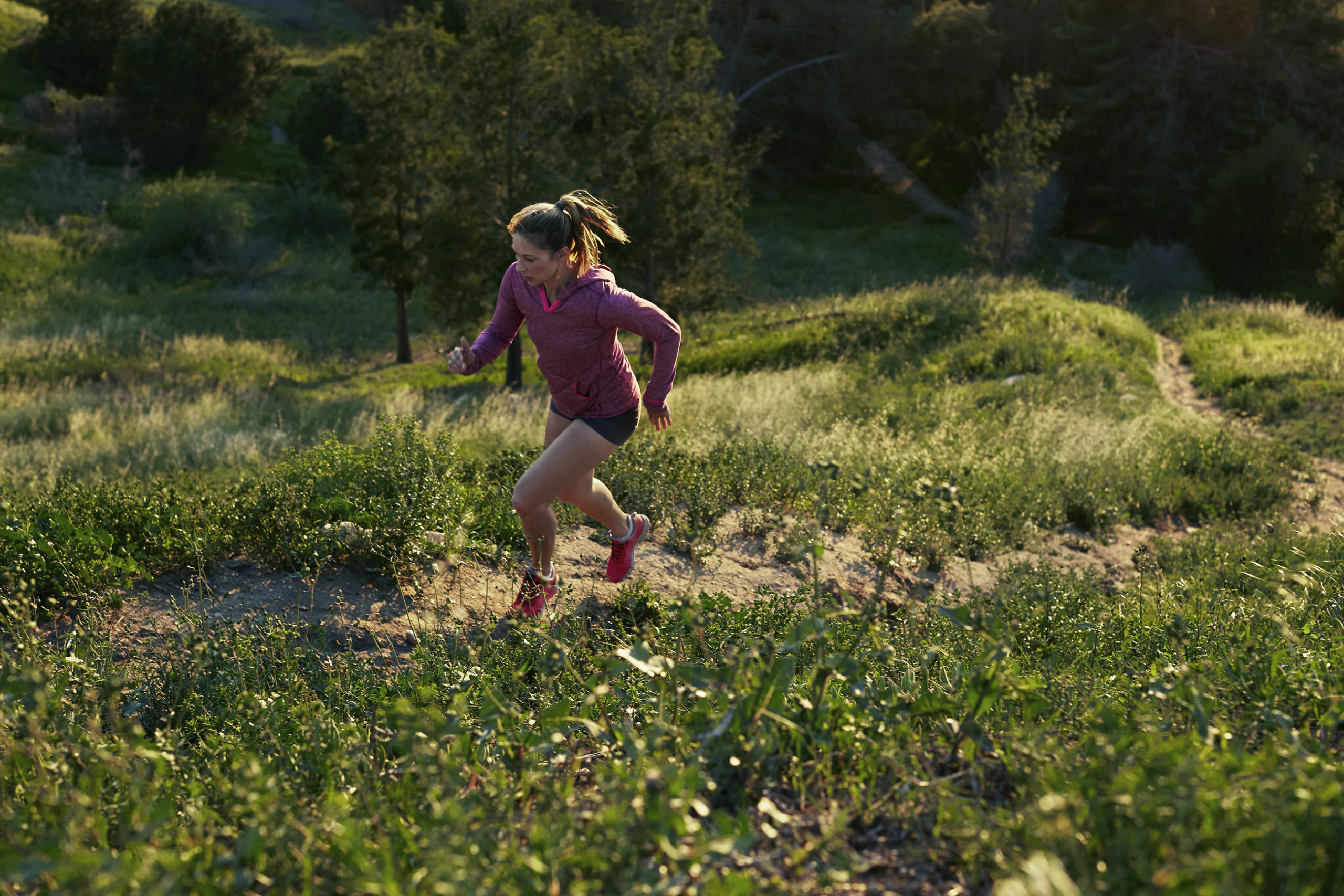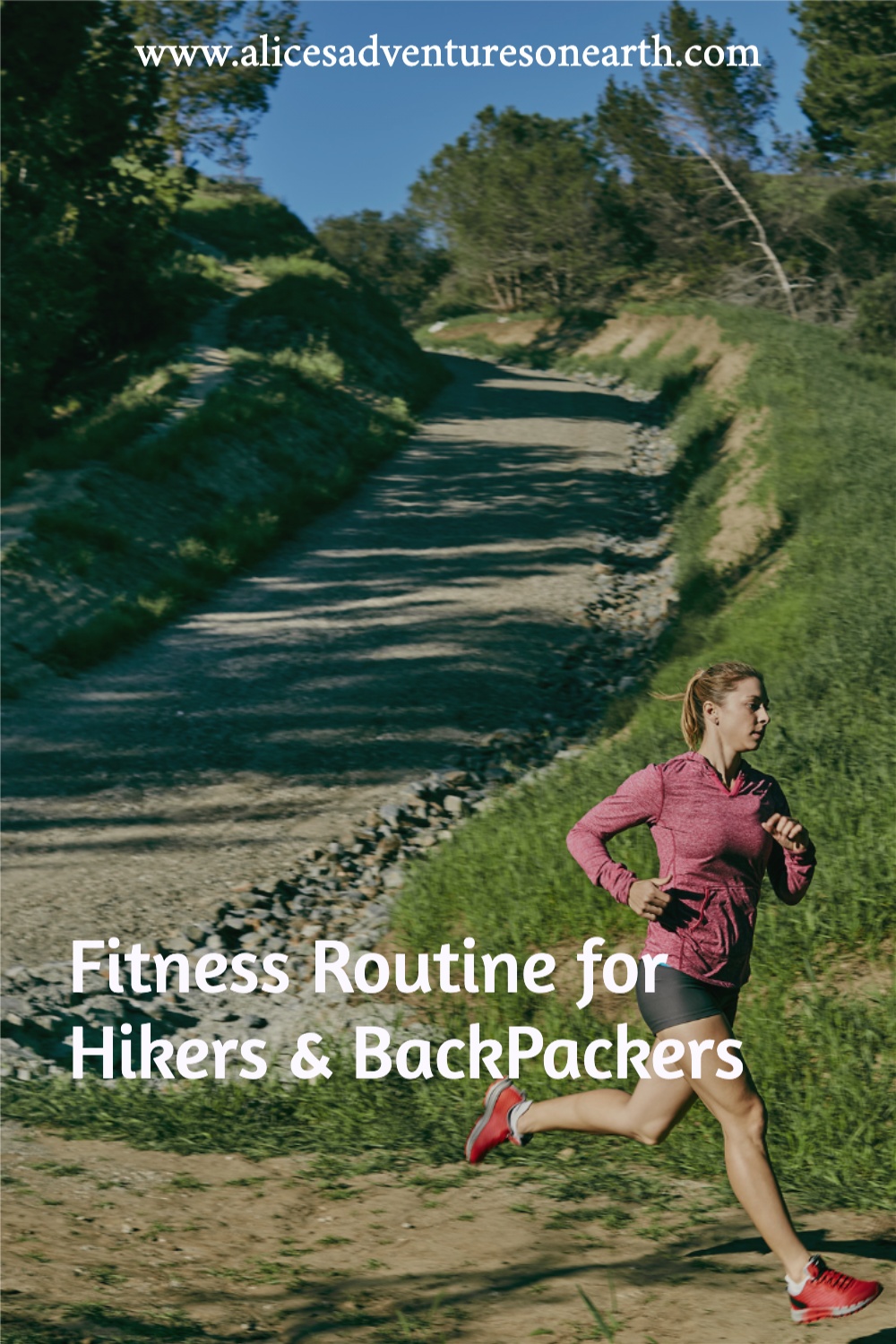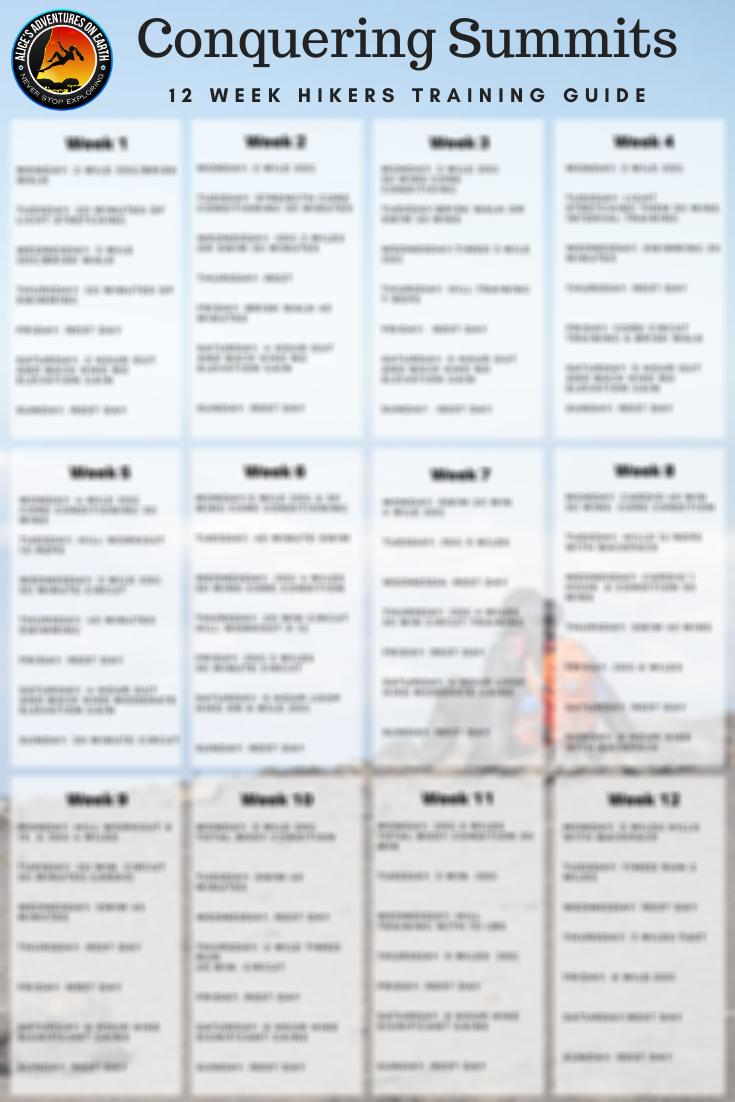Complete Training Guide for Hikers and Backpackers
Hiking is a great way to explore new destinations, see places of immense beauty and challenge your body and mind, but it can certainly be a drag if you’re fighting your own body on the trail—gasping for air, wincing over a cramp, or feeling too tired to keep going after steep ascents. That’s where a good training guide for hikers and backpackers comes in. Adding these workouts into your training regime will ensure you’re more than ready to tackle any trail.
It’s easy to imagine the idyllic hike, winding through flower strewn meadows, past babbling brooks and high into the snow dotted ridgelines of a ferocious mountain range. Those summit views are mesmerizing, but the one thing missing is the physical strength and sweat equity required to handle the physical aspects of the hike.
While it’s rewarding to hike and summit mountains, there’s no doubt that it’s also physically (and often times, mentally) challenging, requiring adequate muscular strength and cardiovascular endurance to make it through. It’s so important to regularly incorporate targeted workouts for hiking into your fitness regime. I’ve been hiking for decades, and I’ve found the best exercises to tone and strengthen muscles, increase your speed and agility, and help with your endurance while ascending up steep trails.
You don’t need a ton of fancy equipment or the latest workout attire. You just need to commit to doing exercises from this training guide for hikers, and be consistent about it!
Need to make your fitness journey a little more fun and adventurous? I’ve got some great tips to share that help you enjoy the great outdoors while you work up a sweat. I may include affiliate links in this post, and if you click them to make a purchase, it helps me earn a small commission at no cost to you. Thanks for your support. Now, let’s get busy!
-
- 👉 Find the perfect hotel
- 🚗 Rent a Car
- 🥾 Find a nearby Trail
- 🧳 Pack the perfect suitcase with these packing cubes
- 👉 All the gear you need for your adventure
- 📱Grab an E-Sim for travel abroad
Step 1: Goal Setting
With any exercise regime, start by setting a goal for yourself. You might want to spend the summer hiking 14ers in Colorado, backpacking along the Continental Divide Trail, or just hiking a trail with a lot of elevation gain. Whatever your plan is, set a goal and aim high.
Take a moment to say your goal out loud and write it down where you’ll see it—on your calendar, in your journal, on a dream board, Post-It note, or the mirror in your bathroom. Goal setting is critical to get results. Whatever endeavors I’ve undertaken, from training for a marathon to preparing to summit Mt. Kilimanjaro, I always start by setting goals. The big goal is finishing the race or the hike, sure. But it ties in with small goals along the way that you should be setting every workout and every week.
Have a goal set for every run, hike and workout and you will stay on track.
Step 2: Commit to a Weekly Workout Routine
The best way to structure your training is to break it into several workouts spread out throughout the week and commit to getting them checked off. Your workouts should challenge you and increase your endurance, strength and agility. If your routine becomes too easy, it’s time to ramp it up.
Running is one of the best ways to get in shape for the mountains, but swimming and cycling are other options for those unable to pound the pavement. Try to:
- Do endurance exercises 2-3 days a week (at minimum)
- Walk at least 10,000 steps every day for aerobic & cardiac health
For perspective, 10,000 steps equates to about 5 miles of walking. If you have a pedometer, Apple Watch, or other step counter, wear it for accountability and start tracking how active you are during the day. You may need to add a morning, evening, or afternoon walk to your daily routine to hit your 10K step goal. Moving as much as possible is not only great for your overall health, but also your physical endurance.
Endurance Training Guide for Hikers: Running, Cycling and Swimming
Running, cycling, and swimming are three of the best ways to build your endurance. Choose to try all three or pick the one that suits you best. The exercise you’ll actually stick with and enjoy doing is the best! I have specific workouts for swimming and running below.
Swimming: If you can swim, it’s one of the best anaerobic, low-impact workouts. For those just starting out, try swimming 800 meters or 45 lengths of a 25-yard pool with a nice slow warmup and cool down. I like to vary my strokes. After a 5-lap warm up, try doing 5 freestyle, 5 breastroke, 2 backstroke, and then repeat.
Running: For runners, plan to do one or two long run days of 4+ miles at a moderate pace, and two other days of interval training where you work on your speed and incline. You can optionally pick a time instead of a distance for your longer runs. For instance, you might run for 45 minutes and then gradually increase it as your endurance builds.
Treadmill running: If you live in a place where running outside isn’t possible, there are some great workouts you can do on a treadmill. For treadmills, break it up into one long day of running at a 0- 1 incline, then a second day on a speed ladder or gradual ladder with a 5-minute warm up and 1 minute at each .5 interval up to 8, then back down. For the gradual ladder, do a 5-minute warm-up and then 5 minutes at 5 mph, 5.5 mph, 6 mph, 6.5 mph, and 7 mph with a 5-minute cool-down. On the third day, do an incline ladder. Pick a speed and gradually go up in incline, maxing out at 10, and then back down to 0. I usually do about 30 – 45 minutes.
These days shouldn’t be consecutive, but it’s about whatever works best for you and your schedule. You can save or download my treadmill workouts below.


Step 3: Hills, Stairs and Incline Workouts: 1X/Week
A weekly hike is the best way to get your fitness going, but including incline workouts is another great way to get you in shape. Stairs and hills will probably be your least favorite exercise, but they’re also the most vital for getting up the steep ascents on many great trails.
If you can find a hill in your neighborhood, jog to it and set a goal of running up it and walking down it anywhere from 5-20 times once per week. If you don’t have a hill nearby, you can also look for a sports stadium at a local college or high school, a neighborhood stair climb, or an office building with many floors where you can do a set amount of stair climbs. Vary your ascent with these options:
- Walking up
- Running up
- Skipping a step, then two
- Hopping on one foot up one flight
- Walking down
Varying the speed you ascend the sairs is not only going to spike your heart rate and prepare you for steep climbs on the trail, but also work on your agility.
Step 4: Add Plyometrics and Cross Training: 2-3X/Week
Strength and agility are one of the most overlooked areas in a training guide for hikers and hiking-based workout regimes. It’s incredibly important to do strength exercises for your knees, shoulders, and core—this is what supports you on your hike! Hikers and backpackers have to deal with heavy backpacks and uneven terrain. A lack of strength and weak fast-twitch muscles will leave you ill-prepared for acting quickly on the trail.
Plyometrics and cross training should be incorporated into your weekly workouts 2 or 3 days a week. HIIT, or high intensity interval training, workouts consist of a mixture of total body exercises in a circuit that keeps your heart rate elevated while working on total body strength. A typical workout will consist of
- Lunges
- Squats
- Push-ups
- Planks
- Cardiovascular exercises, like jumping jacks and box hops
There are some great YouTube channels out there for HIIT and plyometrics training. I like Heather Robertson for great 15-60 minute HIIT workouts.
Step 5: Do Yoga & Stretching: 2-5X/Week
A super important aspect of exercise and hiking is stretching. It can be hard to include pre- and post-hike and workout stretching, so I recommend adding a few days of yoga into your weekly routine. When you start hiking a lot, you will have tight hips, hamstrings, and achilles tendons. It’s really important to stretch and roll out your muscles to keep things from stiffening up too much. A nice 15-30 minute yoga flow can be a great way to keep your body loosened up and feeling its best. There are many varieties of yoga you can try, but the faster flows are generally my favorite. One YouTube channel I like for yoga is Boho Beautiful.

Tips to Avoid Altitude Sickness
- Stay at elevation for 1-3 nights before your hike to get acclimated.
- Take it slowly once you get started.
- Stay well hydrated beforehand, and stay very well hydrated on the trail.
- Eat well the day before your hike and during your hike.
- If you start to get a headache, stop hiking and rest, eat, and hydrate until the symptoms subside. Go down in elevation if they do not.
- Skip alcohol for 3 days before you climb and don’t drink at elevation.
Download the Training Guide for Hikers and Backpackers
This training guide for hikers and backpackers is all you need to get in shape and stay in shape. You’ll be ready for any trail when you commit to adding in targeted, full-body workouts to your weekly routine.
Wherever you decide to hike and explore, this training guide for hikers will help you hit your goals of tackling the toughest and most rewarding hikes throughout the year. Let’s recap: A mixture of running, swimming, cycling, plyometrics and cross training, yoga, and incline workouts are all you need to prepare you for summiting mountains and get you in the best shape of your life.
Don’t forget to download my 12-week training guide for hikers and backpackers and always pack your 10 essentials for hiking when hitting the trail. Got a goal to backpack? Then you’ll want to walk as much as possible with a backpack on. Make sure you have fully loaded up your pack with everything you will need for your backpacking adventures and taken it for a test drive to see how heavy it is and whether or not you really need all those items.
See you on the trail!
Pin This for Later






0 Comments
Trackbacks/Pingbacks